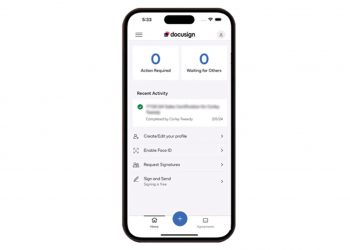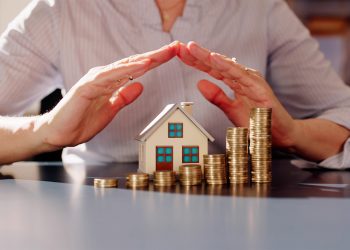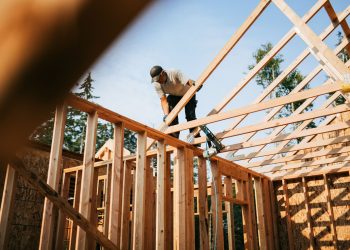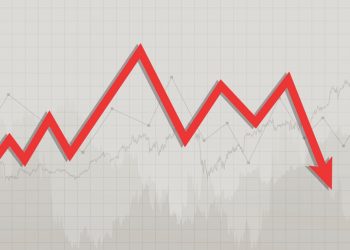By Glade Jones
RISMEDIA, Nov. 28, 2007-Times indeed seem to be changing. Thanks to the phenomenon of “Web 2.0” – the Internet’s blindingly fast move toward user-generated content – the real estate consumer is changing radically. These changes are all focused on what makes buying or selling real estate profitable, convenient and easy. The last decade has taught us that the consumer will gravitate toward the most efficient process. Real estate is no different. No matter how you stack it, if today’s agent isn’t consumer-centric -working where the consumer’s mindset is – the agent is going to lose.
It’s time to build a new kind of agent, one who is not only consumer-centric, but also technologically savvy who gathers and disperses a vast repository of information related both directly and indirectly to the transaction. Today’s agent, Agent 3.0, must truly be a one-stop shop, creating value for a consumer’s trip through the entire homeownership cycle.
First, who is Agent 3.0? And what did Agent 1.0 and 2.0 look like?
Agent 1.0: The Harvester
Agent 1.0 is the “analog agent” of the ’50s, ’60s and ’70s; one who used high-pressure sales techniques and always represented sellers’ best interests, rarely looking out for the buyers’. It was “Sign here. Press hard. Three copies.” It was the era of MLS tear sheets and books. Nobody got into a new home without an agent. In this model, the brokerage’s brand dominated the marketing, and the customer/agent relationship was simply a means to gain information. It was all about the transaction. Splits were 50/50 or less.
Agent 2.0: The Sower
The archetype of ’80s and ’90s real estate, Agent 2.0 was still a gatekeeper focused on the transaction. The difference was these agents just employed savvier marketing techniques that were all about them: their résumé, their community involvement, their ego and most importantly, their big cars, hair and jewelry. They were the stereotypical top producers.
Cutting-edge technology consisted of pagers, the information box, facsimile signatures, the talking house (thanks to low-wattage AM radio frequencies), agent brochures and pre-Internet Data Exchange (IDX) sites that allowed public searches of approved MLS properties. These agents got a bigger piece of the pie, earning higher commissions from their broker. With Agent 2.0, the brokerage’s brand was still critical, but the agent began branding herself and/or her team more independently. The customer/agent relationship for Agent 2.0 became more intimate. Splits began to rise to 60, 70, even 80%.
Agent 3.0: The Farmer
Today’s agent, Agent 3.0, is a consumer-centric advocate interested in cultivating an ongoing real estate ownership experience. This person creates a relationship and aligns him- or herself with the consumers’ best interests, through every stage of the real estate life cycle, from the time they begin researching real estate, to listing, selling and/or buying a home, through the personalization and “home sweet home” stages all the way until the cycle begins again.
Agent 3.0 moves beyond the transaction and starts co-branding – borrowing the equity of leading consumer brands to market both homes and the real estate ownership experience through an arsenal of interactive research tools. Customer relationships are maintained cradle to grave because of the ongoing value Agent 3.0 adds. This agent enjoys high splits, profit sharing and residuals for recruiting.
The haves and the has-beens
Simply put, consumers want complete, unfettered access to all information. To maintain his value in this new “experience” – formerly known as simply “the transaction” – Agent 3.0 must offer tools, services and expertise such as lead-generation and IDX Web sites, social networking, syndication, free information and consumer self-researching. In this environment, Agents 1.0 and 2.0 will see their value continue to erode as competitors swoop in, bumping the agent from the center of the transaction.
Consumers’ minimum expectation of Agent 3.0 is that he provides value that is quantifiable and meaningful to the transaction. They also expect to get information in a timely, relevant manner; in a way that touches them on many different sensory levels, allowing them to envision themselves in a home and take psychological ownership.
One of the forces those in the Agent 3.0 mindset have tapped into is the enormous amount of consumer purchasing energy generated around the home ownership transaction. Agent 3.0 is putting consumers in touch with financial services and other consumer product brands further upstream of where they are typically introduced to these products and services.
Even today, with help from companies like Obeo, consumers can not only view a property but also virtually remodel it. They can not only see the home the way it is – but also the way it could be. Consumers can repaint, add new floor coverings and remodel the kitchen or anything else they can think of. Coupled with these tools is the capability to calculate how much return on investment certain changes – or combinations of changes – will bring about.
Using this insight as a springboard, technology companies in this space can help Agent 3.0 create some really fun, “A-HA!” moments for their customers. Agent 3.0 will successfully find a way to add value throughout the entire homeownership cycle by tapping into a homeowner’s current desires as well as helping them discover hidden motivation through tools that help them dream a more informed dream.
Glade Jones, CEO and president of Obeo Inc., has been actively working and leading out in the real estate industry for the last 15 years. He has served as president of Calute Homes, a homebuilding and land development company in Salt Lake City, Utah, as well as the vice president of Blackburn Jones Real Estate and Development. A lifelong entrepreneur, Glade started what is now Obeo Inc. in 2000 to make the process of finding and personalizing a home more effective and rewarding. Obeo does this by bringing state-of-the-art dream-expanding tools to a potential buyer’s online home search experience. Glade has an undergraduate degree and an MBA from Brigham Young University where he graduated magna cum laude with distinction.
For more information, visit www.Obeo.com.









